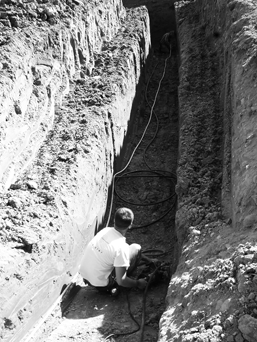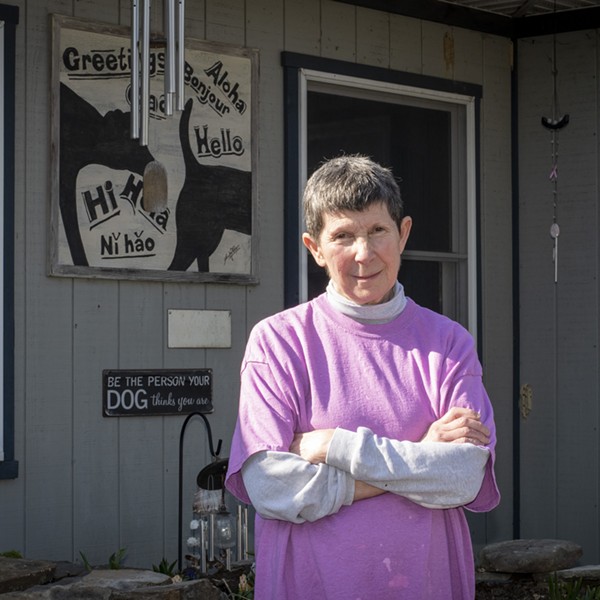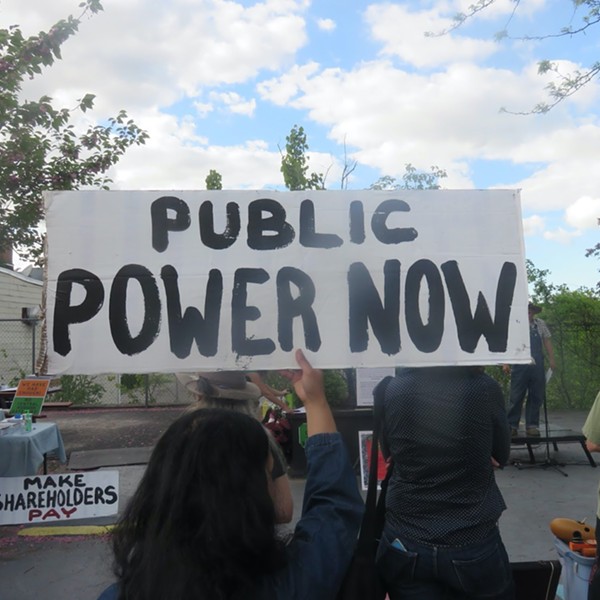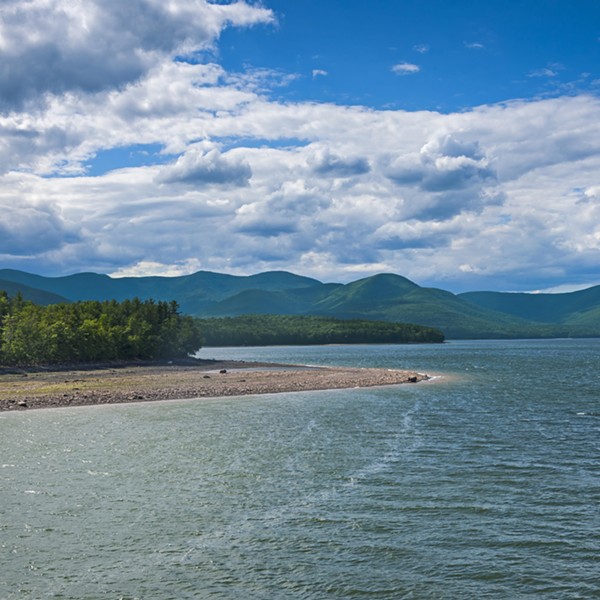In an area that often experiences temperature extremes, from bone-chilling winters to heat-stroking summers, homeowners are faced every month with a reminder of just how much it costs to keep their indoor environments comfortable. The price of heating and cooling seem to be on an ever-increasing trajectory, and the expense of oil is in an almost constant, upward spiral. Taking the time now to invest in alternative energy sources may be the best way to prevent heating and cooling bills from taking an even bigger bite out of the household budget, whether you’re planning new construction or renovating an existing home. But what are the options? And where should you begin? Relax! Look no further than the ground beneath your feet.
Many of us have heard of geothermal heating and cooling, but may not have a clear idea of how it works, and how it can be used to provide for a home’s energy needs. Basically, ground source heat pumps, or GSHPs, use electricity to extract heat from below the earth’s surface and transfer it into a home. And in the summer, when outside temperatures rise, heat is transferred from inside, back into the ground. Why does this work? Heat moves much more efficiently through the ground than through the air, and 10 feet below the earth’s surface, temperatures are a fairly consistent 55 degrees. Once tapped, this storehouse can be used to heat a house in the winter, or cool it down in the summer. As an added bonus, the heat generated in the exchange process can be used to heat domestic hot water.
But how, exactly, does this system operate? First, a little technical information. There are two types of GSHPs, a Closed Loop system and an Open Loop system. The Closed Loop system is composed of loops of plastic pipe buried at depths of six feet and greater. In this system, the heat pump continuously moves the water and a transfer fluid (such as antifreeze) through the pipes. An Open Loop system, on the other hand, uses an existing well, pond, or other source, for the water required for heat exchange. The water is pumped in from the source, provides heat exchange, and then is returned to the intake source. Hence the name “Open Loop.” If a pond is the source, says John Wright, of Hudson Valley Clean Energy, a solar electric and geothermal installer, it must be a minimum of a half-acre in size and maintain a depth of eight feet all year round.
So, where do all these loops go? Well, there are two different methods of installing them, either vertically or horizontally. If you have limited land space, placing the loops vertically may be the only option. However, drilling to the necessary depths, often of 200 feet or more, can get expensive. Larger areas are best covered with horizontal loops placed in trenches, but this area’s rocky soil can make this option less than ideal. The best way to determine which system is appropriate for your home is to speak with the installation experts and schedule an in-person site assessment of the home and property.
Once the pipes enter the house, they carry the water to the geothermal heat pump.
This is generally installed in the basement or in a utility closet, and is just a bit louder than a refrigerator. If noise is a concern, however, the closet can always be soundproofed. In addition to the outside loops and the geothermal heat pump, there are two other important elements of a GSHP. All that warm and cool air has to travel through your house somehow, right? The most popular, and least expensive option, says Wright, is simply ductwork. And lastly, in order to ensure proper ventilation, an HRV, or Heat Recovery Ventilator, is used to preserve indoor air quality and dehumidify the air.
But don’t think that a GSHP can only be considered before your home is designed or built. Charles Lazin, President of Altren Alternative Energy, estimates that while sixty percent of the company’s installations are in new construction, forty percent are retrofits in existing homes. Since many existing homes are already outfitted with ductwork, this can simplify the process further, and work towards reducing the overall cost. In fact, the system can be considered at any phase, Lazin says, whether the architects are in the process of planning and designing the home or the general contractors are in middle of construction.
But in an ideal situation, says Wright, the best time to consider a GSHP is during the planning stages of a new home. Not only because it’s easier to start from the ground up, but also because the entire home can be constructed in the most energy-efficient manner possible. In well-sealed homes, more of that environmentally friendly warm or cool air will be kept where you want it: inside.
So now you’re sold on the science, but how long will it take to install? And how much TLC do these heat pumps need? Typically, installation time can range from two weeks to two months, depending on the size of the system and whether it’s a new install or a retrofit. And for existing construction, a lot depends on the house itself. As Wright points out, a single-story ranch with an unfinished basement will be easier to equip than, say, a two-story brick colonial with a finished basement and attic. Maintenance is almost a non-issue. Just like your refrigerator, says Lazin, the GSHP is nearly self-sufficient, requiring only regular air filter replacement and an annual check-up: “Usually, the heat pumps will run for 20 to 30 years. And when homeowners look to replace them, it will usually be because there are more efficient units on the market.” An added bonus: no emissions!
Cost is always a concern, and a GSHP will take its biggest bite at the beginning, as it costs approximately $10,000 to $15,000 more to install than a conventional system. The average price of a new system will range from $30,000 to $47,000, but can be as low as $15,000 or up to $70,000 or higher. But, as Wright points out, since oil prices keep climbing, the system has an almost airtight future of economic and environmental benefit. There are other cost-saving incentives as well, in the form of a $500.00 tax credit, and a $1000.00 rebate from Central Hudson Gas and Electrical for the installation of a residential geothermal heat pump.
Generally, the biggest rewards will be seen by homeowners who plan to stay put for at least five years, as it typically takes at least three years for the system to recoup the initial investment and begin paying for itself. Lazin suggests “stretching the window to five to ten years in the home, to more fully reap the benefits.” Since we live in an age of uber-mobility, it’s wise to take a realistic view of your future plans before making the jump.
How large a slice of your heating and cooling demand can a GSHP be expected to handle? For a new home, says Wright, the goal is to provide 100 percent of the heating and cooling, and 80 percent of the domestic hot water, all but eliminating reliance on traditional fossil fuels. According to HVCE, units are currently providing heat at a 50- to 70-percent higher rate than traditional systems, and cooling 20- to 40-percent more efficiently than air conditioners.
However, it’s not a totally self-sufficient system, and some electricity is required to get things moving (and keep them moving!). Lazin suggests contacting Central Hudson, which produces some electricity with renewable resources. This can be an option if you’re looking to retrofit an existing home, which may not be as adept in energy efficiency as a newer home. Relying on a GSHP and supplementing “green energy” might be a good compromise if you’re looking towards reducing bills and fossil fuel consumption, but aren’t planning to move or to build completely from scratch. Another option, says Wright, is to consider a solar-assisted GSHP, so that on sunny days your heating and cooling needs will be completely environmentally generated.
Ultimately, all three options keep the systems in the “green,” and allow them to run entirely independently of fossil fuels. And indeed, the benefits extend farther than reducing indoor air pollution and electricity bills. As Lazin says, relying on a GSHP “encourages the growth of alternative energy sources and local resources, and improves air quality for everyone.” While many consumers use the system as a method of cutting costs, Wright says just as many do so out of a larger concern for the environment: “It’s probably a 50-50 mix. If your goal is to reduce your carbon footprint, this is one of the major ways to do that.”
So as you look towards a renovation or plan for new construction, consider the possibilities in geothermal heating and cooling. For an up-front investment, you can create a long-term solution to meet your needs, decrease your household dependency on fossil fuels, and lighten the punch of those energy bills. But maybe most importantly, you can stop feeling so guilty about all those long, hot baths.

















